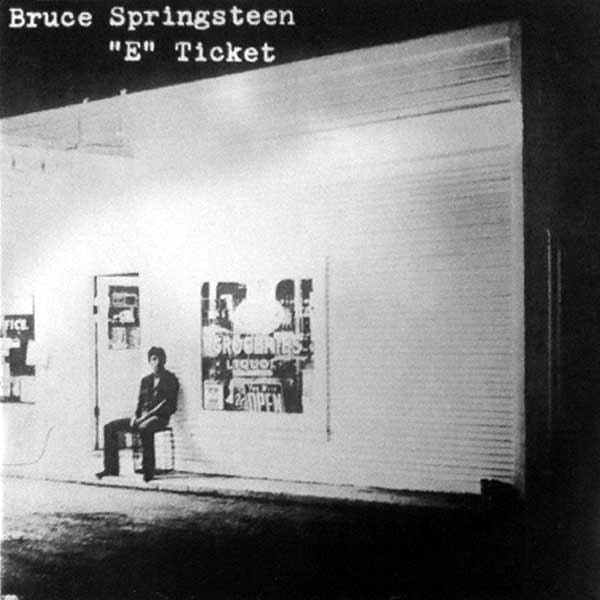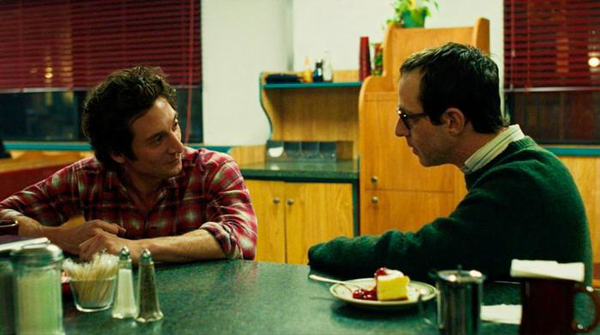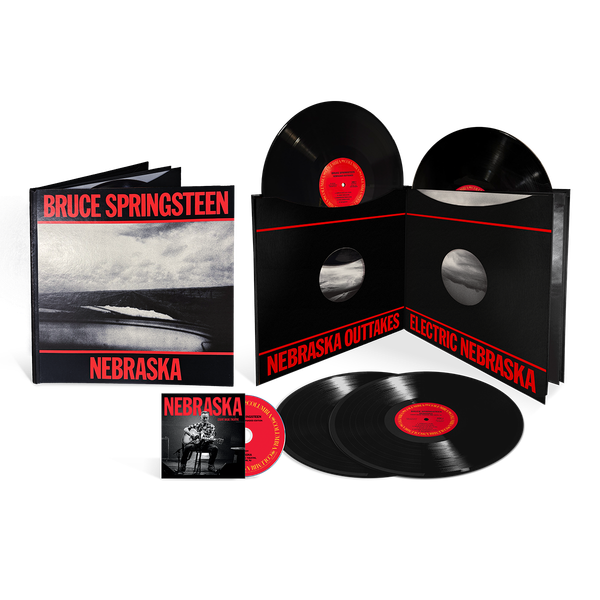The Evolution of Born To Run: "Wings for Wheels" to "Thunder Road"
For the 50th anniversary of Born to Run, a track-by-track breakdown of the evolution of each of the songs on the record.

For the 50th anniversary of Born to Run, here's a track-by-track breakdown of the evolution of each of the songs on the record, going in order from start to finish. Up first: "Thunder Road."
Most Springsteen fans have heard the song that would become “Thunder Road,” known at the time as “Wings for Wheels,” on the recording of the February 5, 1975 show from the Main Point. It sounds tentative at that show because it was truly nascent at that moment; it is the earliest known performance of the song in any form. We have documentation that “Wings for Wheels” was performed at five shows in February of ‘75, and only have recordings for two of those: the Main Point and then the next night at Widener College. About a month later, the E Street Band ended their current live obligations in order to get back into the studio and finish Born to Run, so the song didn’t get the opportunity to gestate in front of a live audience. But its path in the studio wasn’t straightforward, either.
“Thunder Road” likely began its life in 1972 in a song titled “Angelina,” and Angelina is indeed the woman in that Main Point version. In the second edition of his first book -- Backstreets -- Springsteen: The Man and his Music -- Charley Cross (OBM) stated that there’s a 1972 song titled “Angelina" which contains the first two lines of what would later become “Thunder Road,” “...but rather than Mary, the character with the swaying dress is Angelina.” The edition of the book is important because between the first and second edition, Cross got access to Mike Appel, including documentation he had retained from that era, which is where it's believed this particular piece of information originated from.
A couple of years later, in what we believe was October of 1974, Bruce did a solo recording of a track titled “Chrissie’s Song” up at 914 Sound Studios. What’s notable about “Chrissie’s Song” is that it appears to be the first time the term “Thunder Road” was used in a Springsteen composition: “Leave what you’ve lost, leave what’s grown cold, Thunder Road.” Any fan who’s paid even the smallest bit attention to Springsteen’s work is familiar with his proclivity to use and reuse lines until he thinks he’s gotten it right (or to totally forget that he used a line, but that’s another story). It’s not a trait that’s unique to Bruce but it is an interesting thing to keep an eye on, none more so than this particular journey.
Now, let’s talk about “Walking In The Street,” also known as “Lovers In the Cold.” Anyone who bought or traded for a copy of E Ticket, one of the earliest bootlegs featuring studio material, probably remembers the first time they heard this particular track. The intro melody is the “Thunder Road” coda, the first verse talks about how the protagonists “case the promised land,” the piano melody on the verses has a very familiar feeling, the intro comes back between verses, and then there’s a line about the… seating arrangements in this particular vehicle.
Oh baby, I can’t lay the stars at your feet
But I think we could take it all, just you and me
Oh come on and see there’s a lot of room for you baby in this front seat
The other reason “Walking In The Street” stands out so much to me is the emotion and the tone of the lyrical delivery. It’s very similar, so similar that the first time I heard it I thought that someone else had the radio on nearby and I was hearing “Thunder Road” bleeding into what I was trying to listen to. It’s also worth mentioning that Bruce told Mark Hagen in Mojo in 1999 that he had wanted to put “Walking In The Street” on Tracks but that they couldn’t find the master. Bruce also attempted a modern re-recording of the song but for whatever reason didn’t like what he came up with because it’s never seen the light of day.
This is a little bit in the trainspotter category, but is worth mentioning: in the Wings for Wheels documentary that was included in the Born to Run 30th anniversary box set, there’s a shot of a Record Plant tape box with the word “Walkin’” written on the label and a date of May 28, 1975. That doesn’t mean that Bruce was incorrect in his statement to Mojo; it just means no one could find the damn thing.
"Walking In The Street" demo from E Ticket Revisited
Now we circle back to “Angelina” and “Chrissie’s Song:” at some point at the end of ‘74/early ‘75, Bruce self-cannibalizes bits and pieces from both of those compositions. The girl becomes Chrissie or Christine, he grabs lyrics and melody from “Walking In The Street,” and with some additional work we’ve got “Wings for Wheels,” which we have already discussed. But it’s still not “Thunder Road,” and it won’t get there until the entire album production decamps from Blauvelt, NY to the Record Plant thanks to the insistence of Mr. Landau, and that’s where real progress gets made.
There are three working versions of “Thunder Road” from those April sessions that made their way out of the studio, two of which are sufficiently substantive in what they add to the conversation and will be interesting to anyone who’s engaged enough in Springsteen history to be reading this essay. There are other versions documented in Brucebase and I encourage you if you are interested to explore further, but I’m not going to try to make a case for the importance of understanding the progression of the composition with a version that features seven refrains one that features five refrains, not because it’s unimportant but because those differences are not crucial or transformative to one’s understanding of the song.
The first is a full band version. It’s absolutely recognizable to anyone who’s ever heard “Thunder Road” and it’s definitely evolved past any version of “Wings for Wheels,” but is still in need of both some finesse as well as some editing. There’s no harmonica in the intro, just piano; the woman is still Chrissie or Christine, the drumming is definitely in need of refinement, the lyrics are almost there, it’s so close. The chorus still has that awkward chop at “trade in some wings/for wheels” and he’s still trying to work out the main refrain: “Oh, hold tight, take hold, leave what you’ve lost, leave what’s grown old, Thunder Road.”
The bridge is mostly solid until it gets to the guitar solo at the end, there’s no fadeout and the song ends with some completely unnecessary and out of context guitar riffs. You definitely feel like you’re getting a peek behind the studio door with this outtake. The emotional quality of the vocals is definitely recognizable, though.
Thunder Road (demo from E Ticket Revisited)
The second one foreshadows Nebraska and not just because it’s a solo acoustic with a little reverb on the vocals, it’s how Bruce manages to deliver a completely different emotional experience. There’s no triumph, it’s the version of “Thunder Road” that happens in a world where Mary (or in this case, Chrissie/Christine) doesn’t get in the car. It’s the story the hero would tell if it didn’t happen. I agree 100% with the fine folks at JEMS who stated that they felt this one deserved to be on the BTR30 box set.
I also am fascinated by the small lyric tweaks and how one word can make a huge difference:
Woman there’s magic in the night vs Show a little faith, there’s magic in the night
or even
Climb in back, it's waiting down on the tracks vs Climb in back, heaven's waiting down on the tracks
The last two verses are almost finished but they’re missing the hope and the promise that he adds to the final version of the song, to accompany the narrator’s final entreaty. Listen to the difference between this version and the album with the addition of these two lines:
And I know you're lonely for words that I ain't spoken / Tonight we'll be free, all the promises will be broken
Without those lines, he hasn’t taken the scene to an existential place yet, just a mostly transactional one.
Thunder Road Acoustic Demo from E Ticket Revisited
The elevation of that pledge is also what’s missing in that Main Point version. In that version the essential premise in that final verse is basically: the car’s overheating, put up or shut up. He’s still writing about the boardwalk, which is picturesque but specific in a way that doesn’t have as much reach as the final expression of that sentiment. It’s a fairly dramatic transformation, but one that’s parallel to the progress of other songs on the album as well.
Brucebase rightly notes, “The story that the song ‘Born to Run’ took six months to complete is well known, but ‘Jungleland, ‘Thunder Road’ and ‘Backstreets’ all took longer.” That’s not just because of the pains of trying to write and record songs for the release that’s going to determine whether or not your record company keeps you on the roster, of having to tour and play 2 ½ hour shows up and down the Eastern Seaboard just to keep the band afloat, but because Bruce Springsteen’s talents as a songwriter were reaching the next level of his career. That’s not Jon Landau, that’s not Mike Appel, that’s just down to the man who was writing the words and figuring out how to say what he wanted to say.
Sources:





